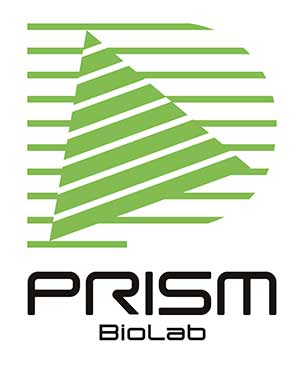Published on: 9月 5, 2024
Natural products often have significant biological activity and they have been taken as the pool of drug seeds for long. In order to lead natural products druggable, they were sometimes elaborated and derivatized to increase the PK/PD profile and decrease the toxicity. These synthesized compounds are, so to say, “natural product mimetics”. PepMetics® molecules are, in a broad sense, natural product mimetics because PepMetics® molecule mimic a portion of a protein.
There is another approach to take advantage of natural products called “pseudo-natural products (PNPs)”.1) The idea of PNPs is to design a natural product-like compound by a combination of natural product fragments. It is a kind of combinatorial chemistry to expand the molecular diversity preserving the characteristics of natural product structures.
PNPs’ characterization was reported in Nature communication.2) The cheminformatic analyses and phenotypic evaluation were conducted in a multifaceted manner and the results were visualized and presented so that everyone would understand the nature and essence of PNPs’ features.
The authors’ scheme for PNP design and evaluation consists of 5 steps. 1) Natural product fragment collection, 2) PNP design by various combination of the fragments, 3) cheminformatic analyses, 4) cell painting assay (CPA)3)4), 5) examination of the relationship of fragment structure and morphological profiles of CPA. CPA is a tool to evaluate the biological diversity in a numerical sense and easily be utilized to see the characteristic fingerprints.
The authors evaluated the chemical nature of PNPs by combination of Tanimoto similarity of the Morgan fingerprints5), PMI (Principal moments of inertia)6), natural product-likeness7),QED (Quantitative Estimation of Drug-likeness)8) and so on. PCA against the molecules in DrugBank, ChEMBL and Enamine were also conducted. The biological disversity were quantified through cross-similarity analysis followed by the calculation of MBP (median biosimilarity percentage). The results were plotted by PCA to condense the phenotypic profiles into two- or three-components.
The PNPs were shown to have chemical diversity related to natural products. They could be classified according to PMI plot because the distribution was mainly governed by the combination pattern of fragments. High diversity in the Morgan fingerprints and PMI indicated the wide potential of PNPs.
The natural product-likeness and QED of the PNPs were in a narrow range. Natural product-likenesses were around 1, which is different from the molecules of DrugBank and ChEMBL natural products. QED values were located in the volume zones of these databases. The combination of these analyses indicated that PNPs would have druggable profile but structurally closer to natural product and possesses different nature against the present chemical classes.
However, PNPs have still challenges for covering the unique chemical space. PCA indicated PNPs are present in the border of ChEMBP-NP, DrugBank and Enamine dataset. PNPs uniqueness would be enhanced by the selection of natural product fragments. It is interesting to see the cheminformatic approach to solve this issue.
In terms of biosimilarity, PCA plot of the morphological data represented the easiness of classification of molecule subclasses. Structural diversity by the combination of different natural product fragments enabled phenotypic diversity as well. But the observation of illegality indicated further research is still necessary to predict the biological outcome through the chemical combination of natural products.
PNP to mimic natural products is a developing entity to produce a druggable molecule. So long as the way for evaluation and characterization of the chemical and biological nature is established, there would be a chance to construct a library with druggable nature. The possibility of the application of combinatorial chemistry to obtain the diversity is also the highlight of this research.
PNPs would play a differentiated role against PepMetics® because the difference of the mimicry nature. It’ll be interesting to see the combination of PepMetics® with natural product fragments. We would be eager to improve PepMetics® library by incorporating this kind of approach as well.
1) https://doi.org/10.1038/s41557-019-0411-x
2) https://doi.org/10.1038/s41467-021-22174-4
3) https://doi.org/10.1371/journal.pone.0080999
4) https://doi.org/10.1038/nprot.2016.105
5) http://www.rdkit.org/
6) https://doi.org/10.1021%2Fci025599w35
7) https://doi.org/10.3390%2Fbiom9020043
8) https://doi.org/10.1038%2Fnchem.1243

